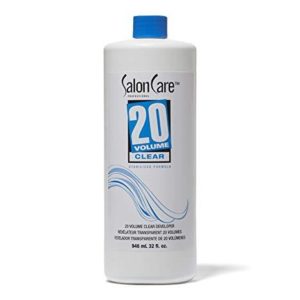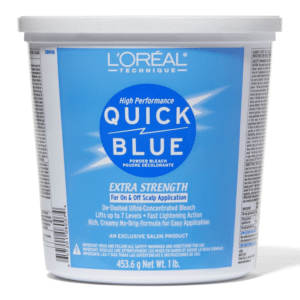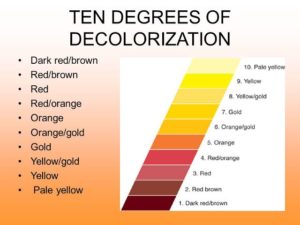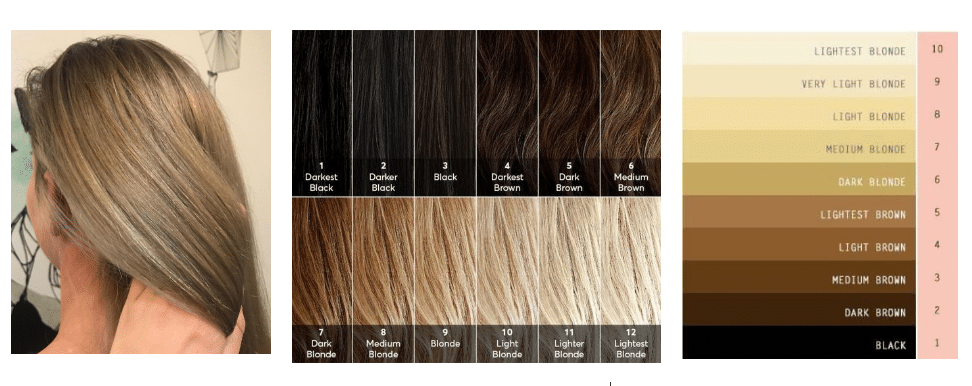Highlighting Hair: Techniques for Coloring Hair With Foils
Though creative, highlighting hair can be a challenging endeavor.
However, this hasn’t affected the upward trend in the search for the perfect hair color. Many youngsters color their hair.
And different magazine front page are covered with the same. In fact, both adults and teens are actively involved. So, if you find yourself wanting to change or enhance your hair color, you’re not alone.
Why Do People Highlight Hair?
There must be a motivating factor for people to want to color their hair. While it’s easy to say it’s a fad, looking closely at it might reveal a pattern:
- Someone with a gray hair may want to cover it up
- Enhancing an existing hair color is another reason
- It’s part of creating self-expression, or
- For the purpose of highlighting a specific haircut
As you can see, haircoloring isn’t something that’s static. And many are interested in it for different reasons.
Whether you’re trying to experiment with hair color or change your look, this article will …. of the intricacies.
What to Consider Before Highlighting Hair
There are a few things to consider before changing your hair color. These things affect the quality, and ultimately, the success of the haircolor process.
Also, haircolor products can have a positive/negative and small/big effect on your hair. So, it’s important to know which product you should/and shouldn’t use so you can get the best results.
Let’s look at some of these things:
Your Hair Structure
There are three components of the hair. The cortex, cuticle, and medulla.
The cuticle is the outer layer of the hair and plays a good role in protecting the cortex, and forms a higher percentage of the hair strength.
The cortex, on the other hand, is the inner/middle layer of the hair. This is where, melanin, the natural pigment that determines the hair color, is located.
This is why the cortex plays a great part in the haircoloring process. Finally, the medulla is the innermost layer of the hair, with little influence in the highlighting process.
Texture
The texture forms the diameter of each strand of hair. The larger the diameter, the coarser the hair texture. And the smaller it is, the finer the hair texture.
The texture of the hair affects the distribution of melanin. When the hair is fine, the melanin is grouped tightly, which facilitates quick haircoloring.
The coarse hair has a loosed melanin grouping, thus the color isn’t absorbed as quickly as fine hair.
Density
This is the number of hair per square each and can be either thick or thin.
applying haircolor, you need to put this into consideration as it plays a role in the process too, just like the hair structure and texture. It affects the coverage of the haircolor, so pay attention to it.
Porosity
Porosity is used to measure how fast your hair absorbs moisture. A porous hair takes in haircolor faster, resulting in a faster process.
Moreover, it’s also easier to get a superior tone with porous hair compared to the one that’s less porous.
It’s divided into low, average, and high porosity.
When your cuticle is restricted and color/chemical penetration is stiffened, then you have a low porous hair. This can make the haircolor process longer.
Average porosity is normal and often works out as expected. A highly porous hair is lifted, meaning that it absorbs color very quickly. Just as it fades quickly.
Hydrogen Peroxide Developers
 This is an oxidation agent that plays an important role in changing hair color.
This is an oxidation agent that plays an important role in changing hair color.
However, it has to be mixed with another compound, known as oxidation haircolor, such as a lightener before it can supply the necessary oxygen to change natural hair color.
There are other developers (or catalysts) but Hydrogen Peroxide are the most widely used agents for haircolor.
Hydrogen Peroxide comes in different volumes and should be used according to how much hair you want to lift.
It’s usually in four groups, volume 10, 20, 30, and 40. The lower the volume, the less the amount of lift you can achieve and vice versa.
A 10-volume HP can be used for maintaining the natural color while 20- and 30-volume involves significant hair lifting or permanent haircolor.
If you just want a slight lightening in the hair, 10-volume peroxide is the most suitable. However, if you want a permanent haircolor, go with 20-volume.
But don’t go above 30-volume, even if you want a maximum lift. Exceeding that may result in unintended damage.
Hair Lighteners
 These are chemical compounds that are used for lightening the hair. They dissipate, discolor, and break-down the natural hair pigment to achieve a color change.
These are chemical compounds that are used for lightening the hair. They dissipate, discolor, and break-down the natural hair pigment to achieve a color change.
Lighteners are mixed with Hydrogen Peroxide, forming oxidation, which begins the haircoloring process.
Depending on how light you want your hair to be, you’ll need to apply different processes at this stage.
You can use the two-step coloring process if you want a light, pale blond. This is where you prelight your hair before applying your desired haircolor.
The first step is to apply the mixture to the hair and wait for 90-minutes, after which the hair color should have changed.
You’ll now be able to apply a toner to the hair, often referred to as the toning process.
The products you’ll need here is a toner, which is designed to add tone to your decolorized hair.

With lighteners, you can create a light blond shade that a permanent haircolor wouldn’t otherwise achieve.
It can also be used to lighten your hair to a specific shade, brighten an existing one, or applying lightness to a small part of the hair.
You can also use Demipermanent colors, which begin from level 8 up to level 10 in the degree of natural hair decoloration.
The darkest is red/brown at level one and 10 being the lightest at pale yellow.
Most people stay at 10 as it’s often brighter and lighter than the rest. However, other colors like gold can also be used.
The Decoloration Process
Your hair goes through different stages during the decoloration process. This can be as many as 10 as you can see from the previous hair color levels.
First, the natural hair color is lifted and a new degree of color is achieved. Next, the desired haircolor is layered on this.
While the natural pigment remains, it’s only to contribute to the desired new color. Lightening is another process that’s necessary for getting the right haircolor and brightness.
Toners are also used here for achieving paleness at the end of the process. They’re available as semipermanent, demipermanent, and permanent haircolor.
It’s important to state at this stage that the lightest hair color is at yellow pale. Going for a complete hair lift for a full-white blond hair may result in damage to the hair.
Methods for Highlighting Hair
Cap Technique
To use this technique, you pull out hair strands through a perforated cap with a metal/plastic hook. Combing is done to achieve a non-tangle appearance.
The number of hair strands that’s pulled varied and that will determine where the highlighting is done.
To highlight, simply lighten your hair with a powdered off-the-scalp lightener. Start at the area of the head where there is the most resistant. Now, cover the lightener for the process.
After processing, remove the lightener by rinsing and applying shampoo. Now you have lightened hair. What remains is to towel blot the hair and condition, if necessary. You can also tone the hair if you like.
Foil Technique
Foiling is done by a weaving section of the hair, placing them on foil and applying lightener or permanent color.
After that, it’s sealed with a plastic wrap for processing. For a more natural-looking highlighting, apply permanent haircolor to the strands.
To use this technique, create a section block on your head by slicing. Make a straight part at the scalp and bring out a narrow section of hair. Place this small part on the foil and apply the color.
Hair Trends: Resources to Understand the Whirlwind of Hair Trends
Hair Trends fade as quickly as they emerge. And if you don’t keep up to date, you don’t get to know what’s in vogue.
You probably are okay with old hairstyles. But if you like to keep abreast of the latest changes in color, shape, texture, and styles, you’ll want to stay tuned to changes in the industry.
For some people, this provides a lot of fun aside from the benefit of feeling “being among”.
That’s why some spend so towering dough on hairstyle magazines and on salon visits.
You’ll find some of Style Hair Magazine’s original collections here as well as different articles where you can get inspiration for your next hairstyle.
Related Posts:
- Can I use Blue-Black Cellophane on Bleached Hair?
- How to Choose a Flat Iron Without Damaging Your Hair
- American Crew vs Suavecito: Which of the Two Brands Is Better?
- Niophlex vs Olaplex: Which is BETTER for Hair Color?
- Wella vs Matrix: Which of them Should You Choose?
We earn commissions if you purchase thru our link. Majority of products aren’t tested by the site owner (except a few). Content is from the research and feedback of users.

